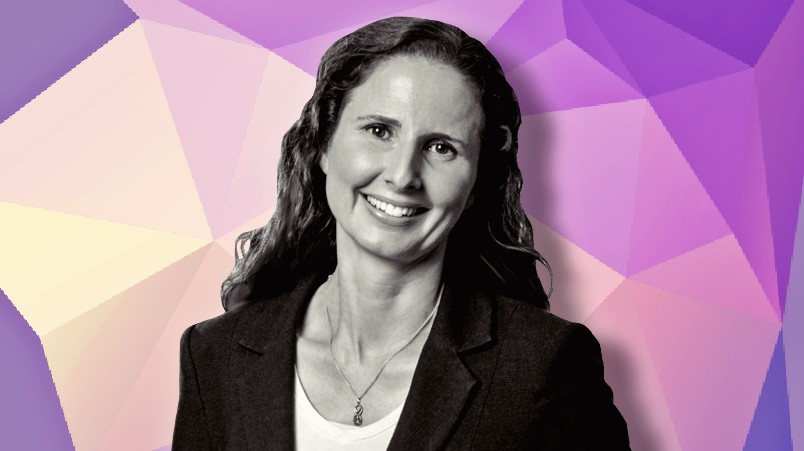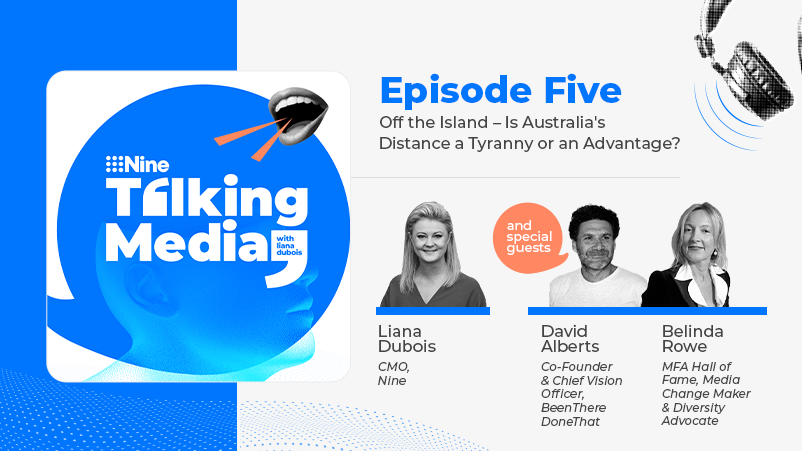From business continuity risk mitigation to customer experience acceleration: What flicking the switch on a new digital platform did for Legend Corporation’s sales and service teams

Alison Murphy: "We have moved to working directly with customers, talking to them about their pain points and where they’re looking to grow."
Legend has reduced customer service workloads by 1000 hours annually, gone from 100 per cent manual touch to 65 per cent order automation, unified its customer data into a single view and generated $1 million in ecommerce sales from a base of $30,000 in one year, after braving a Salesforce Cloud and Mulesoft technology overhaul. Yet the three-year project, delivered in two years to everyone’s pleasant surprise – and thankfully within budget – wasn’t without its hiccups, including a dire implementation partner swap at a critical juncture.
However, with automation and data insights capabilities firmly in place, and some solid business and customer wins under her belt, Legend’s head of marketing and digital, Alison Murphy and her team are now working to uncover and solve a greater number of internal and customer pain points. She’s confidently planning to tackle next-best action recommendations and more personalised customer experiences capabilities next too.
And, the combined IT, digital and marketing leader says, the whole project and buy-in to change will help Legend, historically a late adopter of technology and digital, introduce “AI in a gentler way, rather than overusing AI in our business” in the near future.
What you need to know:
- Faced with an acute 18-year-old legacy system risk issue that threatened business continuity, Australian electrical supplier, Legend Corporation, embarked on a multi-year digital transformation program to bring in Salesforce CRM, Mulesoft’s connector platform, new product information management, ecommerce and price management.
- The three-year rollout had the buy-in of the CEO and was delivered in two years thanks to an iterative implementation and change management process designed to gain the trust of employees and ensure cross-functional buy in, head of marketing and digital, Alison Murphy, says.
- Productivity and operational wins abound, including 1000+ hours in manpower, a switch from 100% manual touch ordering to 65% automation, data unification, fresh ecommerce and website offerings, internal reporting improvements, customer service wins and huge customer experience gains.
- Yet the project faced some hefty challenges, including a failed implementation partner exchange. That meant having the courage to try out a new player coming into the Australian market for the first time.
We did small things first. I was strong with my team to say these are only little things but this is where trust is built and it’ll be what allows us to do big things in the future. The legacy system had to be peeled like an onion, as it had so much functionality and risk associated with it. If we’d moved everything at once, there was the potential for real disasters.
The original task at Legend was to replace an 18-year-old legacy system identified as a major risk to business continuity after private equity owners acquired the group in late 2019. Legend is an Australian-based manufacturer of electrical componentry, consumables, tools, testing and measurement services.
Legend’s on-premise, custom-built platform might have been jam-packed with functionality including order management, pricing, freight and Web services, but no one in their right mind wants to rely on such a platform or find themselves with limited talent to manage a mission-critical system. It’s enough to make any IT manager, digital chief or CFO extremely uncomfortable.
Enter Alison Murphy, an IT, digital and digital marketing professional with experience working across Blackwoods, CGU Insurance and Navair Jet Services.
Murphy was initially brought in to write a digital strategy for Legend. “They’re quite a traditional business and didn’t quite know what to do, didn’t have someone in the business with that kind of vision. So I wrote the strategy with that ‘pie in the sky’ approach, that said if you have all the money in the world these are the things I would do,” she tells Mi3 in an interview at this year's Salesforce World Tour Sydney.
Halfway through presenting to the then-CEO, she was offered the job. After multiple conversations, she took it.
“I ended up thinking if he’s that committed to this big strategy, it’s a massive opportunity for me personally. There was already some commitment to deliver this and some trust in me,” Murphy says.
From mid-2020, armed with the key objective of moving software out and enhancing ecommerce capability, Legend began implementing Salesforce and Mulesoft. It has since launched eight new ecommerce websites for each business unit, debuted a new PIM system, put in pricing and freight microservices in AWS, and implemented Configure Price Quote (CPQ) software.
The three-year plan was delivered in two years. Murphy attributes much success to a CEO prepared to make decisions quickly. In addition, the team iterated delivering functionally to foster trust around changes being made internally.
“We did small things first. I was strong with my team to say these are only little things but this is where trust is built and it’ll be what allows us to do big things in the future,” she says. “The legacy system had to be peeled like an onion, as it had so much functionality and risk associated with it. If we’d moved everything at once, there was the potential for real disasters.”
So Salesforce Sales Cloud went in first. “We just did accounts, contacts and quotes and the CRM piece. Teams were able to see how easy it was to use and how great it looks,” Murphy says. “On the surface it’s like painting the walls – the CRM piece is great and it looks good – but we are now getting to a point where it’s a real engine room for our business.”
From there, a product information management platform (PIM), along with Mulesoft’s integration platform, were introduced. Twelve websites came next including eight ecommerce sites. Legend has achieved 30 per cent month-on-month ecommerce revenue growth in one customer segment, and overall ecommerce revenue hit $1 million in the first-year post-rollout, from a base of $30,000 the year prior.
“That was a big thing for the business because it hadn’t had anything they could talk to customers about and be proud of. That gave customers full access and visibility of online and offline orders; customer specific pricing – we have literally millions of prices here because every customer has a specific price for every product,” Murphy says. “Using Mulesoft, we were able to deliver all information back to Salesforce.
“That real-time pricing means customers log on and get their own pricing, there’s no need to call anyone. It shows all open and closed order, specific pricing, plus all live stock availability across all of our plants, and if it’s not in, when it’s expected to arrive. All in a customer-facing platform customers had never really seen before. Even two years later, so many customers say it’s the best the electrical industry has.”
Some of the original KPIs we had to meet were around turning the legacy system off but more importantly, not crashing the business.
Turning business improvement into customer outcomes
The above example shows just how much the project, fuelled by risk mitigation, has proven a boon for a whole new level of customer experience.
“Some of the original KPIs we had to meet were around turning the legacy system off but more importantly, not crashing the business. We had zero days or time when we couldn’t invoice, no downtime that wasn’t planned,” Murphy says. “But what happened along the way was that ability to reduce calls on price and availability to the call centre by half, plus the ability to make 65 per cent of orders touch free. We have 700-100 order per day, which had all needed to be touched manually before. Now, 65 per cent are automated.
“I don’t think many people come to Mulesoft thinking it’s great for customer experience or service, they’re thinking about how to connect systems. But I’d recommend thinking about business problems you have. Nine times out of ten, a platform can deliver more than what you think it can.”
That ability to surface data directly to customers about orders and dispatch status in real time reduced call centre volumes – this question alone represented 56 per cent of all calls. It was made possible by joining up all systems and using Salesforce CRM as the central platform of record.
“Mulesoft is our problem-solving platform when we have conversion issues from one system to the other, operating with multiple data structures, working through those challenges,” Murphy says.
“We hit this time in Covid where the customer service team was inundated with phone calls. I thought there has to be better way. The data the customer is calling for is available in Mulesoft, so how do we make it work for us? What if we could use data in Salesforce we’re getting from other systems in Mulesoft and deliver that in real time to customers? Can we pull all in? If someone emails us with a registered email address in Salesforce, can we get all open order, put in spreadsheet, dispatch dates and send to them?
“Three days later, we had a function where a customer already in our system and against their account, could send an email, Mulesoft gets all their open orders and expected dispatch times, and sends it back to the customer within 30 seconds. Answering where’s my order questions was critical – they’re more than half the calls to the customer service team. We didn’t buy Mulesoft for that but it was there and capability we could use.”
Partner quandary
Like any tech transformation project, however, thing didn’t all go smoothly. Within months of agreeing to work with its existing SAP ERP platform partner on the Salesforce and Mulesoft implementation, it was clear to Murphy the partner was failing to deliver.
“We took on a Mulesoft partner who gave us a great deal and who we’d used for SAP work before and were very good at. They were pushing into a Mulesoft practice. But we got burnt massively as they didn’t have the resources or the knowledge. We assumed they’d be able to deliver the way they had on SAP and they couldn’t,” Murphy says, adding she shed a few tears and had many sleepless nights over the process.
Desperate for a replacement, Salesforce suggested Legend try out Apisero, a US-based player coming into Australia offering six months’ worth of free services. Apisero had won awards in the US and other countries many times, but were nevertheless unproven in the Australian market.
“I kept on saying you’re saying it’s for free but you’ll get two weeks in and we’ll have used up the free resource,” Murphy says. “Yet they just smashed it. We wouldn’t have been able to do it without them.”
At end of six months, aware its Salesforce partner wasn’t performing anywhere near the level of Apisero, Legend went to a competitive pitch for that ongoing work.
“We had paid $250,000 to this third-party to rewrite the requirements documentation – Apisero said let us pitch for it,” she says.
“I had nothing to lose. Apisero came back half price, agreed to a fixed price, which is almost impossible to get but critical if you’re going to stick to your budget. By the end of it, I was willing to do any testimonial they wanted. They were the biggest saviour – we could not have done it in two years without them.”
Today’s status quo
Murphy is now overseeing three improvement programs, and each sees her going to the business asking for them to tell her their pain points.
“There are some things we can fix from a digital perspective; there are some we can’t and I’m doing a lot of process re-engineering and it doesn’t have much to do with the systems,” Murphy says. “That’s where we start and develop continuous improvement programs and agenda. It’s just about chipping away at those pain points.
Two things were necessary to get to this point for Murphy. The first was earning the trust of the business, while the second is having the foundational capability to enact change.
“You have to get those systems in line and squared away. We had a hyper care period where I pissed off a lot of people because I said no, we’re not doing that yet,” she says. “But for those who I said no to, that became to me a real testament to what we had achieved. When people start realising they can do different things and are not stuck where they are, versus the last two years where you’ve had to convince them to change… you know you’ve hit the perfect spot. They’re coming to us saying can you do this, and we say actually yes, we can.”
Tomorrow’s predictive + AI plan
AI and personalisation are up next. Murphy is looking to introduced next-best action functionality to ensure sales can be more personalised. Already, she’s brought in customised dashboards for sales teams highlighting opportunities to grow accounts based on competitive market share as well as preferred product lines.
“Data gathering and building custom tables and functions is helping us get to the point where it’s opportunity identification because of other pieces of information we’ve gathered around the customer,” she says. “It’s applying some rules on all customers to see which one is most likely to buy on the web, then recommending we should talk to them on the web. So we have personalised conversations happening, even though we’re still in an industry that’s very relationship driven.”
Improving share of wallet is the key outcome here. So when Murphy took up marketing responsibility a year ago, she moved towards a more account-based approach.
“We have moved to working directly with customers, talking to them about their pain points and where they’re looking to grow. If I know you want to grow over here, I’ll help you grow in that way. That’s been a big shift,” she says.
“We’re ensuring things are visible in Salesforce, that we’re targeting this or working with a customer to grow the portfolio they have chosen. That’s the switch in terms of marketing. We haven’t put in Salesforce Marketing Cloud because of cost. We have Dotdigital but we can have that info flow back to Salesforce anyway. They can still see a customer opened an email without having to have the extra, significant expense.”
Another opportunity Murphy spots is leveraging Salesforce Service Cloud Einstein. But with any AI adoption, she stresses the need to ensure use cases are fit-for-purpose for the convserative Legend organisation and electrical industry.
“We’re now at a great place where all our data is together, in one spot. The electrical industry is risk averse but we have a great advantage in capitalising on Salesforce with AI future-looking capabilities and bringing AI in a gentler way than overusing AI in our business,” Murphy adds.



